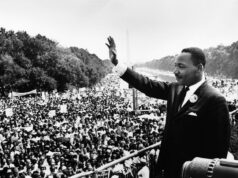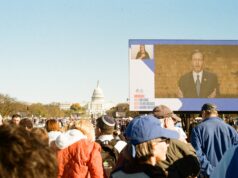Kurdish fighters made a successful push to recapture Sinjar this week, freeing the Iraqi city from Islamic State. The Yazidi minority living in the area hope that the advance of Peshmerga forces will finally conclude Islamic State’s reign of terror, which has costs thousands of lives over the past 15 months.
With the backing of coalition airstrikes, 7,500 Kurdish troops, including elements of the PKK, and Yazidi militias began a two-day battle for the city on Wednesday. According to local reporters embedded with the Peshmerga, they quickly overwhelmed the approximately 600 IS fighters inside the town.

A Kurdish soldier looks at a building damaged during fighting in Sinjar. (Photo: AP) |
Pockets of resistance remained on Friday, even after Masoud Barzani, head of the Kurdish autonomous region in Northern Iraq, declared victory. IS fighters left behind traps and roadside bombs as they left the city, while extensive shelling and airstrikes have also turned parts of the town to rubble.
After Islamic State’s advance on the city in August 2014, up to 200,000 Iraqis left fearing for their lives, including up to 50,000 people, mostly Yazidis, who rushed up Sinjar Mountain. Surrounded by IS, and without food, water, or proper shelter, the U.S. government intervened, concerned over the potential for genocide. Coalition airstrikes and an exit route cleared by Kurdish fighters helped those trapped leave the mountain, but the town below remained under IS control.
Ultimately, the effects of 15 months of Islamic State atrocities has wreaked havoc on the Yazidis, destroying and displacing communities that date back hundreds of years. Sinjar’s liberation comes after Islamic State committed what U.S. Holocaust Museum scholars called genocide against the minority population. Over 3,000 Yazidi women have been captured by the group and are used as sex slaves, abused, or imprisoned. Human Rights Watch estimates that the terror group committed targeted killings of 3,000 to 5,000 non-combatants who were members of religious minorities. Other human rights organizations continue to investigate reports of mass graves in the area.





